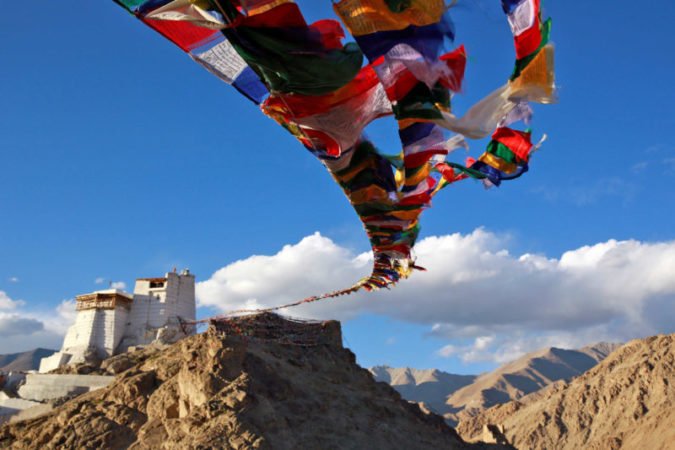Key to the present Ladakh dispute lies in history India forgot

There is a very poor Indian scholarship with regard to the Himalayas and the Himalayan frontiers, which paves way for policy decisions that are not rooted in historical context, said an expert on the Himalayan affairs in an interview with The Kootneeti, requesting anonymity. He said that unless an elementary Indian understanding of the Himalayas is corrected and borders are relooked at, a lasting resolution to the India-China dispute in Ladakh would not be found.
He said, “There can be two kinds of resolutions. One, a temporary resolution in which a status quo ante is achieved and Indian and Chinese personnel go to places where they were before the present dispute, but this would mean that there would again be a dispute sometime later because your borders would continue to be undefined. The second resolution is the long term that concerns the resolution of the boundary dispute.”
The expert highlighted that one needs to understand the basis of the Chinese territorial claims to understand the border dispute. He said, “China’s claims to Indian territories are based on Tibet’s historical claims on these territories. Since China considers Tibet as their integral part, it considers Tibet’s territorial claims as integral too.”

Contrary to the present-day position of the Tibetan government-in-exile, the expert said Tibet was never entirely independent, but it was rather an autonomous or a semi-autonomous state with allegiance to Peking (present-day Beijing).
He said, “Historically, the relationship between Lhasa and Peking was that of an overlordship, just like between a princely state and Delhi would have in India.”
The present dispute is, therefore, a result of undefined borders with Tibet, coupled with a lack of understanding about the distinction between the Indian Himalayan identity and the Tibetan identity. When a historical context is brought into the argument, it is learnt that now that the Tibetans do not have any authority, they do not claim Indian territory, but their claims lasted as long as their authority in Lhasa.
The Himalayan expert quoted above said, “In 1947, upon Independence, the Tibetans were invited to Delhi in the celebrations and to address the question of borders. They did not address that question. Shortly after, in October 1947, they sent telegrams to Delhi stating their claims on India-held territories and asking for their return to Tibet.”
Such telegrams are a matter of historical record. The then Prime Minister Pandit Jawaharlal Nehru mentioned this in Lok Sabha in 1959. He had said: “In Premier Chou’s letter, he has referred to a telegram we received from Tibet — from Lhasa — in 1947. The point which Premier Chou has made is that even in 1947, that is, soon after we became independent, Tibet claimed territory from us. It is true that we received a telegram from the Tibetan bureau in Lhasa, which was forwarded to us by our Mission in Lhasa, claiming the return of Tibetan territory on the boundary of India and Tibet. A reply was sent by us demanding the assurance that it was the intention of the Tibetan government to continue relations on the existing basis until new agreements were reached on matters that either party might wish to take.”
Despite Tibet claiming Indian territory for as long as they held any authority in Lhasa, the Indian government later backed Tibetans when differences developed between them and the Chinese.
The Himalayan expert quoted above said that it was the case because the Indian leadership viewed these differences as being fundamental, but the leadership could not understand that it was the ideology that was the bone of contention, not anything else.
He said, “Had there been no Chinese Communist Party or Mao, the Tibetans and the Chinese would be peacefully coexisting today. It was about the ideology, about communism and non-communism.”
As the situation worsened, the Dalai Lama fled from Lhasa and the Government of India provided refuge to him and his followers. The Tibetans eventually established their government-in-exile in India in 1959 — in a country to whose territory they had officially laid claims until 12 years ago.
On this, the expert said, “Lhasa never had a political allegiance to India, but to Peking. Their relations with India concerned only pilgrimage and trade. There were no political stakes for India there. Yet you brought the Dalai Lama here who has historically had allegiance to China.”
He reiterated that the Tibetan government-in-exile may now say they don’t have claims on India but they have no authority today. As long as they had authority, they asserted those claims.
“In New Delhi’s advancing the Tibetan cause, Tibet’s historical claims that have now been taken up by Beijing are also being advanced, so a sort of legitimacy is being given to Chinese territorial claims. The Indian leadership has not been able to understand this in all these decades,” said the expert.

Coming back to the question of identities, the Himalayan expert highlighted that there is a distinction between Indian Buddhism and Indian Himalayas from Tibetan Buddhism and the Tibetan plateau. He said that just like an ignorant person may consider all South Indians as Tamils, a layman may consider all Buddhists as one but that that is not the case. There are distinct sects.
He said, “In Tibet, there is the yellow sect of Buddhism. These yellow sect’s lamas have historically been an instrument of expansion for Beijing. In India’s Bihar, Bengal, and Odisha, there is the red sect of Buddhism, distinct from that of Tibet. The Tibetan system had always been more linked to that of China than with India. In giving emphasis on Tibet in India, India’s own Buddhist and Himalayan identity is being diluted.”
He said such a distinction had always been there but it has been forgotten over the last six decades and it has created confusion in policy-making. Such a muddled understanding of Tibet along with an undefined border with it, therefore, remains at the core of the India-China dispute.
The expert mentioned the case of Bhutan and highlighted that even as the country’s Buddhist religion is very similar to that of Tibet, they have maintained a very strict distinct identity. “They have not confused their identity with that of Tibet like India has confused its Himalayan and Buddhist identity with that of Tibet, because, unlike India, they have recognised that threats to their territory do not come from China’s claims but from Tibet’s claims, so they have maintained the distinction.”

In the discourse on the ongoing Ladakh confrontation, it has been said that the usage of terms like “Indian claim” and “Chinese claim” and the interpretation of the Line of Actual Control as the “border” is counter-productive to the Indian cause. The LAC is the “de facto border” and not the actual border and China’s respecting LAC should not be interpreted as their respecting the border.
Coming back to the ongoing dispute at Ladakh, the expert said that it is about making peace with what you have or to have a forward-looking approach.
He said, “The Indian claim is till the International Border which is at the end of Aksai Chin. The Home Minister has said it in the parliament and there has been a parliamentary resolution for the same since 1962 that counts all of Aksai Chin as Indian territory. Even if you resolve the issue today, the Chinese would go back by a kilometre or two, but they would still be in occupation of all of Aksai Chin that India has claimed and that Indian maps have always shown which we have studied since childhood. Now it is about what do you want the resolution on — on what you presently have or on what you have always considered yours.”



















